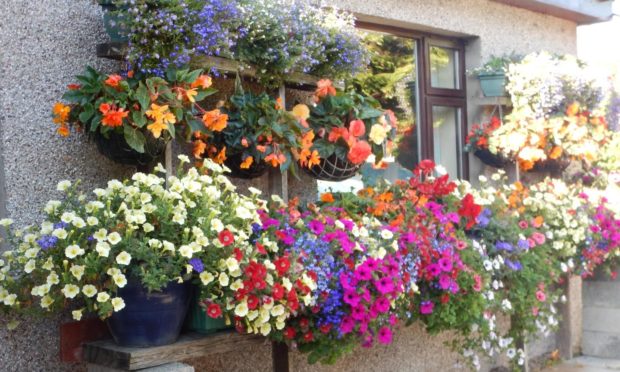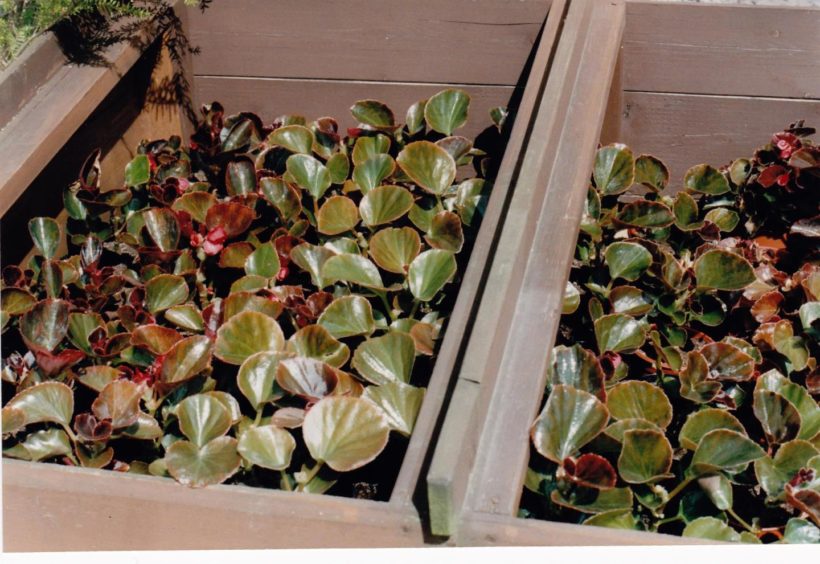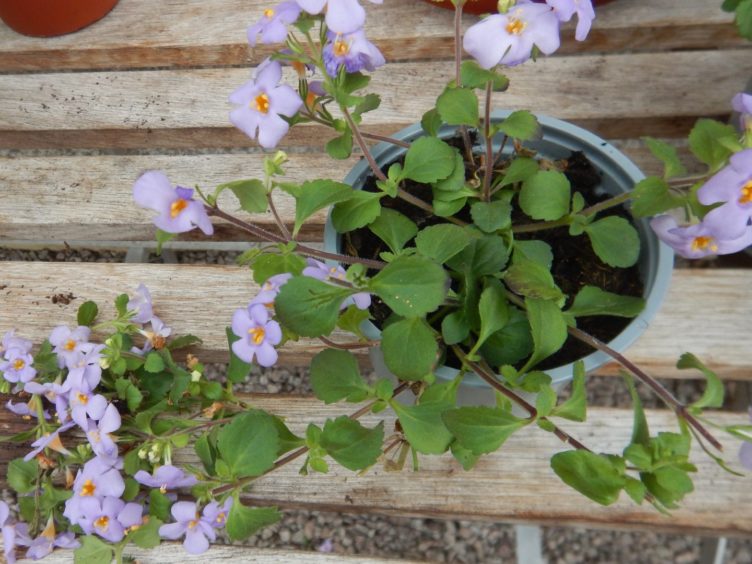Regular visitors now able to return to garden centres will know that summer bedding plants are on offer in abundance.
This year there are loads of “ready-to-use” young plants on the shelves as we approach our optimum planting time, from mid-May onwards. Some are displayed in the open and could probably be planted out any time now having been acclimatised, or as we describe it “hardened off”.
Some of the more tender types will still be covered in glasshouses, tunnels and dedicated shelters and not yet fully “hardened off”. I think of things like Begonias and Salvias for example.
This term, used by gardeners through the ages, means what it says. Many of the plants which we use for summer display are not natives and the nearer their native location is to the Equator, the more tender they will be.
My daily outside temperature readings (max and min over the previous 24 hours) show a significant variation over the last couple of weeks. What I am most interested in is the overnight minimum – anything below 6C spells danger for some of these bedding plants out in the open.
I think you will have the message by now. If in doubt, continue the hardening off process by standing the plants out uncovered during the day time, which will help to firm up the foliage, and bring them in at night.
Nowadays, many of the plants in question are grown in individual pots or cells each with their own share of compost, even so, they could be running out of nutrient, becoming hard and unthrifty. Such plants, when eventually released into a bit of decent soil, will take ages to recover and start to flower. Some, like French Marigolds, will produce a miserable flower on top and simply stop growing.
Dairy farmers talk about giving their cows “maintenance rations”, plus more to produce the milk. In that context, maintenance means the minimum amount of food required to keep the cows healthy.
Back now to your little bedding plants. They have a small allocation of nutrient in the compost containing the roots, and as the days lengthen and the temperatures rise they will be using up the nutrient FAST. Nowadays, most plants will be in a soilless compost, and while the manufacturers say there is enough food in there for up to six weeks’ growth, I sometimes wonder.
Steady incremental growth is essential but, be careful, there is no way that you want the plants to grow too fast or so lush that they become tangled up with each other, prone to damage when they are planted out. The happy medium is to give them a sensible maintenance ration of liquid fertiliser. My suggestion would be that a half-strength liquid feed should be applied every 10 days before planting out.
Mention of the French Marigold earlier highlights another phrase used at this time – it could be “stopping” or more likely “pinching out”. This is really a form of pruning. Removing that early flower on the French Marigold will cause the plant to branch out and by the time it is in the ground there will be several flowers showing colour from the resultant side shoots, leading to a much better mass display. This technique can be more widely used.
During the holding period many of your bedding plants will be starting to stretch and those that are meant to form bushy plants (as opposed to those with a trailing habit) will also benefit from having growing tips removed – Snapdragons (Antirrhinum) is a good example, as indeed are Fuchsias.
Warm, showery weather is not uncommon in Scotland and that causes me to think about the aforesaid bedding plants which will thrive in such conditions, as indeed will many of our herbaceous perennials. Regrettably, so too will some of our native wildlife which needs fed. I guess you know where I am going with this one.
Slugs and snails just love to gorge on tender young growths. Much is being written and broadcast these days about how we must learn to cope and tolerate the damage done to our beloved plants. We get into discussions about the food chain – kill all the slugs and snails and some of our bird and animal species will starve to death because we are destroying their food chain.
It is easy to become quite emotive about such matters, but as the old saying goes “a man’s got to do what a man’s got to do”, in itself, a sexist allegation! Let’s get back to the slugs and snails – how about feeding them so they don’t spoil our precious plants? It is not so far fetched or ridiculous as it seems, but first, in some situations you can fend off the little blighters.
I have several Hostas planted as specimens in a gravel bed and dare I whisper it – they are safe as houses. One or two are in large planters and they too are OK. For those of you who prefer to see any of the vulnerable species in your garden borders, the solution is to protect them by regular spraying with a slug and snail repellent.
It is not my habit to advertise plants and products but now and again I have a sound excuse for doing so and this is one of them. Grazers G2 Slug and Snail repellent (based on calcium chloride) can be sprayed on vulnerable plants to protect them.
Apparently when applied, the foliage becomes bitter and unappetising to slugs and snails so it doesn’t even affect the food supply for the budgies et al.
There are additional claims in the blurb about improving growth but that is not why I would buy the stuff. Check it out for yourself.


